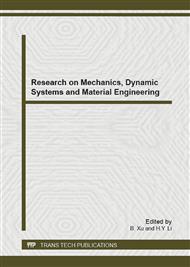[7]
J.J. Burke, and V. Weiss,translated by Y W Wang,Y C Zhang.Ultrafine—Grain Metals.Beijing:National Defense Industry Press(1982):214. (1) The fatigue life of material increases along with grain size decreases [8] M. Kage,K. J. Miller,and R.A Smith.Fatigue Fract Eng Mater Struct (1992);15:763 . Therefore SPR joint has great dynamic fatigue strength according to structure strengthening. Fig 3 Metallography phase of the Joint and partition map Hardness Distribution of the SPR Joint Section It's found that the grain shape of the sheet changed from equiaxed which far from the rivet to streaky which near the rivet. From the joint macro morphology, it can be divided into five regions as shown in Fig 4, A the un-deformed matrix, B1 upper plate self-locking area, B2 transition area of the upper plate, C1 lower plate self-locking area, C2 transition area of the lower plate. Fig 4 Partition map Fig 5 Hardness test points Throughout of the section of the joint, the figures represent the location of the point of hardness testing see Fig 5. The corresponding figures from the serial number in Figure5, table 2. Hardness distribution is increase form A the base metal about 72.3~74.9 [HV] to B2 transition zone of the upper plate 97.3 [HV], and C2 transition zone of the lower plate about 82.2~85.5 [HV]; the highest value is found in B1 upper plate self-locking area 102~104 [HV]; C1 lower plate self-locking area reaches 100 [HV]. During the process of SPR joining, the grain size of the material which near the rivet is draft into streaky, and the region has the highest hardness over the section. From the distribution of the hardness, it is corresponding to the microstructure change of the section of the joint. Table 2 Hardness and distance from the rivet center NO
1
2
3
4
5
6
7
8
9
10
Hardness[HV]
72.3
98.8
100
82.2
100
104
98.3
74.9
102
85.5
Distance from the rivet center[mm]
6
3.23
2.82
4.05
3.1
2.75
3.9
5.7
2.83
4
Conclusion In this paper, the grain size and hardness distribution of SPR joint's section was analyzed. SPR is a cold forming technology, during the process the grain of the materials change from equiaxed to streaky, and the grain size is 40~50 [um] on matrix, 20~30 [um] on self-locking area of the lower sheet. The hardness over the section of the joint, which is correspond to the grain size change. The smaller the grain size is, the higher hardness can be found in the region. Grain refinement will block the grain to sliding and increase the yield limit. According to the grain size change, the fatigue strength of the alloy has a relevance to the grain size. SPR joint has great dynamic fatigue strength during to work strengthening. Acknowledgement This study is partially supported by National Science Foundation of China (Grant No. 50965009). References
Google Scholar


